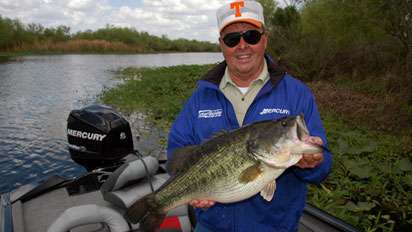
It may sound like a science fiction title, but it happens. Invasive species are nothing new. Some sort of critter gets introduced in a non-native environment, throws the natural system out of whack and causes a lot of problems.
A few examples in our aquatic habitats include round gobies, hydrilla, milfoil, zebra mussels, etc.
Sure, we humans have long aided in the spread of invasive species, and — unfortunately, as the world seems to be a smaller place — we are getting “better” at making such mistakes.
Of course, the Asian carp species are on the growing list of mistakes. And wow, have they caused their share of problems since they escaped into the Mississippi River via flood waters from catfish farmers’ ponds in the 1990s. From there they really took off in the river itself, its oxbows and even up its tributaries. These fish have spread far and wide. They’re now even threatening the Great Lakes.
Many of the Mississippi River oxbows in my neck of the woods/water are now infested with these bighead and silver carp. Some of my favorite bass fishing holes are now filled with these big fish, many of which have the nasty (and dangerous) habit of leaping from the water when a boat approaches. I got hit by a big one while moving along in a boat a little more than a year ago. It hurts!
The introduction of Asian carp is no highlight to recreational boaters. But it’s a pain in the tailfin to fishermen.
Plankton/filter feeders, these carp hit a native food chain at its most basic link. According to the U.S. Department of Agriculture, they can grow 50 pounds or bigger and can consume 20 percent of their weight in plankton per day.
Hamper or eliminate the basic element of a food chain at such a rate and it’s easy to see that all native fish will suffer.
What can be done? It’s a real, not-going-away-anytime-soon problem a lot of fisheries are dealing with today. But what, if anything, can be done? No one seems sure.
One common cry to help curb the problem is to find a market for these fish. And there are groups out there at work on this. This includes those now trying to convince groups that these carp are dining delicacies in North America as well as those pushing to make the fish more marketable as animal feed for zoos and the like.
Another notion, which may seem really more science fiction than fact, is the development of “daughterless carp.” Daughterless refers to a bioengineered carp that will not reproduce female fry. The basics of this plan indicate, once introduced, the fish will produce no females and eventually the species will crash. Sci-Fi? Maybe, maybe not. Such research is being done in Australia, and who knows? It could be a solution to the problems we are now facing with Asian carp. We can only hope.
And finally, with all invasive species, remember that awareness is a big deal. Learn more about it, and perhaps we anglers, even on the individual level, can make a difference in combating such dilemmas.
The USDA has a website to promote awareness and information about all invasive species. There is a wealth of information there. You can check it out at www.invasivespeciesinfo.gov.
For more words of wit and wisdom from one of our sport’s greatest legends, check out www.billdanceoutdoors.com.

